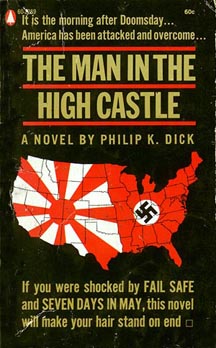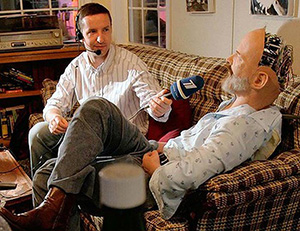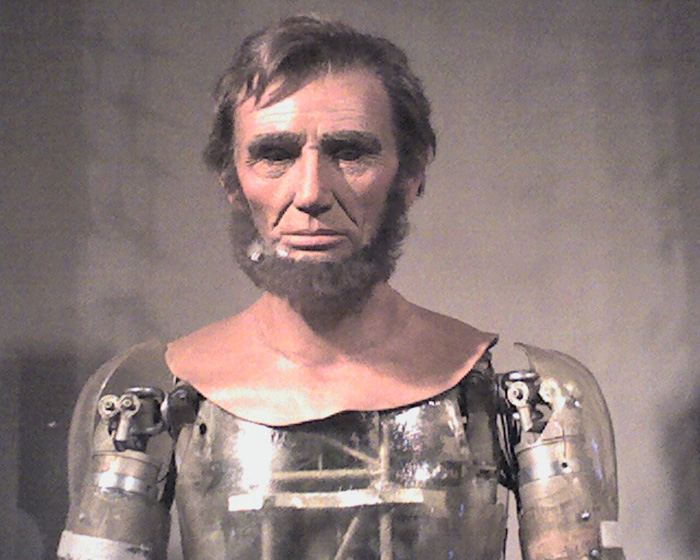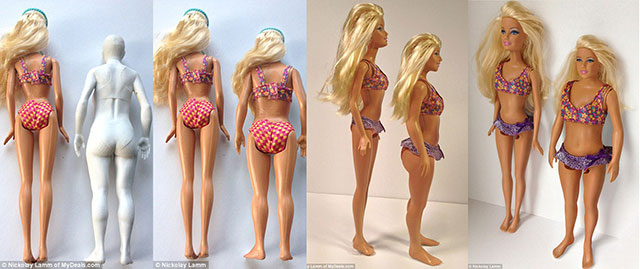John Hornick just contributed an article to 3DPI about forgeries, determining the real from the false. As he discussed counterfeiting in a 3D printed world, I thought: who better to address the topic than the master of counterfeit worlds, Philip K. Dick. I don’t think that Philip K. Dick ever foresaw the advent of 3D printing, but I don’t think he needed to. His works deal extensively, almost exclusively, with the topic of replication and false realities. The sci-fi author, whose novels and short stories were made into countless films like Blade Runner and Total Recall, was obsessed with distinguishing what was real from what wasn’t and determining the ultimate nature of reality. If you go through his works, it wouldn’t be hard to extrapolate his thoughts about the simulacra of his time to the simulcreator of ours, the 3D printer. And, I think, that’s what drew me to 3D printing in the first place.
When I first heard about 3D printing, my imagination instantly jumped to the following question: what if you could create a 3D printer so advanced and so accurate that it could make a flawless recreation of an object? Let’s say it had the capability of duplicating a user’s iPhone in its entirety: chips, SIM card, casing, even the wear and tear. How would you be able to tell the two apart?
Dick’s Hugo-winning The Man in the High Castle is a piece of alternate history that takes place in a world where the Nazis won World War II. In it, there are entire businesses devoted to the manufacturing of forgeries of pre-war Americana:

Walking slowly over to his bench, Frink picked up the still-rough and burred ramrod of the revolver. Another three days and the gun would be finished. Yes, he thought, it was good work. An expert could have told the difference . . . but the Japanese collectors weren’t authorities in the proper sense, had no standards or tests by which to judge.
In fact, as far as he knew, it had never occurred to them to ask themselves if the so-called historic art objects for sale in West Coast shops were genuine. Perhaps someday they would . . . and then the bubble would burst, the market would collapse even for the authentic pieces. A Gresham’s Law: the fakes would undermine the value of the real. And that no doubt was the motive for the failure to investigate; after all, everyone was happy. The factories, here and there in the various cities, which turned out the-pieces, they made their profits. The wholesalers passed them on, and the dealers displayed and advertised them. The collectors shelled out their money and carried their purchases happily home, to impress their associates, friends, and mistresses.
Like postwar boodle paper money, it was fine until questioned. Nobody was hurt — until the day of reckoning. And then everyone, equally, would be ruined. But meanwhile, nobody talked about it, even the men who earned their living turning out the forgeries; they shut their own minds to what they made, kept their attention on the mere technical problems.
IP law is of great concern for many, in considering the implications of 3D printing. Major companies are trying to predict how 3D printing will affect the sale and production of their goods. Research firm Gartner predicts that, by 2016, there will be $15 billion worth of IP theft reported due to 3D printing. Dick hints that a certain amount of forgeries would have to be accepted into circulation, otherwise, all objects might be taken for fake and the value of both real and false would collapse. And, while creating an exact duplicate of a prop from the Iron Man movies and selling it on eBay will cost Marvel some money, the forgeries in Dick’s book are obviously a symbol for something with much greater stakes.
What if you could copy an entire person? You’d scan someone and 3D print a clone, including their memories, thoughts, feelings, and beliefs. Then, you’d swap them around, like in a game of Three-card Monte. Would you know which was the original and which was the doppelganger? Would the original and the doppelganger even know who was who? These were the sorts of questions that PKD was after. In his story, The Electric Ant, Dick creates a character who isn’t quite real:

Waking up to realize that you’re entire sense of self has been a lie is at the heart of Dick’s larger themes. You might begin to wonder why you are the way you are, if there’s anything unique about you and your place in the Universe. Do you really matter in the grand scheme of things at all? The realization that Poole makes, while punching holes into his robotic brain, leads to the more impossible, but even more important question: what if you could 3D print an exact replica of the entire Universe, people, planets, and all? How would you determine which was the original? Moreover, what if that process had already taken place and our Universe was the doppelganger?
The book Ubik, for instance, has its main character, Joe Chip, dealing with an evil entity that seems to be permeating the reality of Joe and his team of precogs. The world surrounding Joe’s team starts moving back in time, populating the world with cars from the 1950s that gradually regress to become Model-Ts, TVs become radios, and so on. The only thing that can save Joe is a mysterious product called Ubik, which Joe can apply to himself or his surroundings to prevent this reverse entropy. Eventually we find that the world is actually someone else’s, the imagination of a deranged and dying sociopath. The great thing about science fiction is that it’s always an allegory for the society in which the writer and reader live. In the case of Ubik, the reader might wonder if his/her/zhir own reality was fabricated by a deranged force.
Dick’s obsessions with false realities was connected to two big concerns he had in life, one of which had to do with a sort of profound evil associated with fake worlds. He recognized that many powerful people had used forgeries to control the minds of the masses, saying in his lecture, “How to Build a Universe That Doesn’t Fall Apart Two Days Later”:

So I ask, in my writing, What is real? Because unceasingly we are bombarded with pseudo-realities manufactured by very sophisticated people using very sophisticated electronic mechanisms. I do not distrust their motives; I distrust their power. They have a lot of it. And it is an astonishing power: that of creating whole universes, universes of the mind…
And in there somewhere is the other topic, the definition of the authentic human. Because the bombardment of pseudo-realities begins to produce inauthentic humans very quickly, spurious humans—as fake as the data pressing at them from all sides. My two topics are really one topic; they unite at this point. Fake realities will create fake humans. Or, fake humans will generate fake realities and then sell them to other humans, turning them, eventually, into forgeries of themselves. So we wind up with fake humans inventing fake realities and then peddling them to other fake humans. It is just a very large version of Disneyland. You can have the Pirate Ride or the Lincoln Simulacrum or Mr. Toad’s Wild Ride—you can have all of them, but none is true.
As 3D printing really begins to take off, these are things to be wary of. Now that the power to create forgeries is getting to an unprecedented state, what will happen to our already, increasingly, false world of advertisements, political campaigns, 24-hour news channels, and “reality” tv?
Imagine going to a museum and looking at Michelangelo’s David, admiring the fine craftsmanship, only to realize that the artifact was 3D-printed to prevent the real thing from eroding in the hot Italian summers. The reproduction has been flawlessly mimicked by a robot, while the original is locked away in a storage facility somewhere. This may not be so bad when considering one statue; after all, there are countless reproductions of paintings the world over. Imagine the – not necessarily likely – possibility that every sculpture were digitally backed up and all of the originals locked away. Sure, we remember that the real David exists in that storage facility, but will our grandchildren know or realize what the point of the original was? If the storage facility blew up, would anyone even know or care?
Perhaps, being so detached from the significance inscribed into authentic items, we’d start to treat the things in our lives as dispensable copies. Like characters in The Man in the High Castle, it’s possible that we’ll collect forgeries. We’ll scan our goods and print them with frivolity, knowing that they can always be replaced, eliminating authenticity altogether. If your favorite mug breaks, you can always print it again. And – when things get very advanced – if your kidney breaks, you can always print a new one. If your dog, child, partner dies, print a new one. Suddenly, the value behind the things we care about starts to vanish. Luckily, PKD also invented a concept that challenges the ceaseless reproductions made possible by something like 3D printing: the idea of fake fakes. From “How to Build a Universe…”:
For example, in Disneyland there are fake birds worked by electric motors which emit caws and shrieks as you pass by them. Suppose some night all of us sneaked into the park with real birds and substituted them for the artificial ones. Imagine the horror the Disneyland officials would feel when they discovered the cruel hoax. Real birds! And perhaps someday even real hippos and lions. Consternation. The park being cunningly transmuted from the unreal to the real, by sinister forces. For instance, suppose the Matterhorn turned into a genuine snow-covered mountain? What if the entire place, by a miracle of God’s power and wisdom, was changed, in a moment, in the blink of an eye, into something incorruptible? They would have to close down.
While replacing fake birds at Disneyland with real ones would certainly be a subversive act, I take Dick’s concept of the fake fake differently. I started The RealityTM Institute as a fake think tank/service institute, sort of modelled after something like the Koch brothers’ Freedom Works or the Church of Scientology. Because those institutions already seem to project false realities to the world, indoctrinating people to believe in a false reality that serves the institutions’ founders, The RealityTM Institute is a fake fake, poking fun at such spurious-reality factories in its quest to “determine what’s real and what’s not, so that you don’t have to.” Here’s a hint: everything with The RealityTM Institute’s green logo stuck to it is real and everything else is not.
It’s possible that 3D printing could leave us with false representations. We might see a 3D-printed David replica, not knowing about the original locked away somewhere and become content with our simulacra. At the same time, though, 3D printing could provide us with a means of subverting the power holders of the world. For instance, when studios market 3D-printed characters in conjunction with a new film release, we could copy those figures and print them ourselves, deflating the value of the original. Or, more mischeviously, we might add our own modifications, altering the 3D models to have our own likenesses, make them fatter or skinnier, taller or shorter to claim the marketing campaign as our own. Nickolay Lamm, for instance, modeled his own Barbie doll to more accurately reflect the size of a teenage girl. He made her a bit more robust with better proportions to comment on the terrible ways that our society distorts the self-images of women. In these ways, 3D printing may leave us with some options of rebellion against spurious reality factories like Disney.
Whether or not our world is a doppelganger, however, begs a larger interrogation. The idea is really meant to, almost physically, induce a sort of panic that leads to the ultimate question: what is reality? Or, as I like to put it, what the hell is going on around here? Where did this thing called life come from and why does it exist? Why do I exist? Considering these questions, 3D printing and the replicas it forges might have come about to reveal just how false our perceptions of reality are, maybe hint at a deeper truth.
In Hinduism, the reality that we experience is actually a game or drama being played or acted out by the cosmic spirit, Brahman. Brahman courses throughout all of creation playing hide and seek with itself, with its consciousness partially enacted via human beings. Most of the time, people are caught in the drama of their day-to-day, suffering the pains of life, but, occasionally, they’ll be able to catch glimpses of themselves as Brahman. One becomes truly enlightened when able to recognize him/her/zhirself as the cosmic spirit all of the time. You are all of creation doing its endless dance through and around you. In other words, you are god.
3D printers, especially as they advance, are a perfect embodiment of this philosophy. Or, maybe, they are a great way of revealing this philosophy. Imagine that you, personally, built that impossible 3D printer I mentioned earlier, one so advanced that it could create an entire Universe. Let’s say you scanned the entire cosmos and had it 3D-printed. Pouring out of the universal extruder would be the Big Bang and everything that took place after it, leading all the way up until the point that you built the Universe Printer in the first place. It’s a process that goes on and on, forever. You would be your own god, your own Maker. The small printer you might have on your desktop, then, is a microcosm of that grand machine, that machine in miniature. You might 3D print a Yoda head out of PLA – harnessing the power of the Universe with your immense physical capabilities and genius intellect – and you might think to yourself, “I am Brahman”.
Nice to meet you, Brahman. I’m Brahman, too.
Still, all beliefs, religious or otherwise, are just projections. You project your belief about how the world works onto your environment, as far as I can tell. I’ve never become enlightened, so it still seems like just another nice interpretation of reality to me. In that way, individuals create their own false worlds, applying the magical mechanics of their own belief system to the incomprehensible world that they are and that is around them. Life may be the product of some god, the Big Bang, or anything else, but, however you describe it, the description still falls short of the real thing. For that reason, Philip K. Dick’s definition of reality still seems like it may be the best, to me: “Reality is that which, when you stop believing in it, doesn’t go away.”




